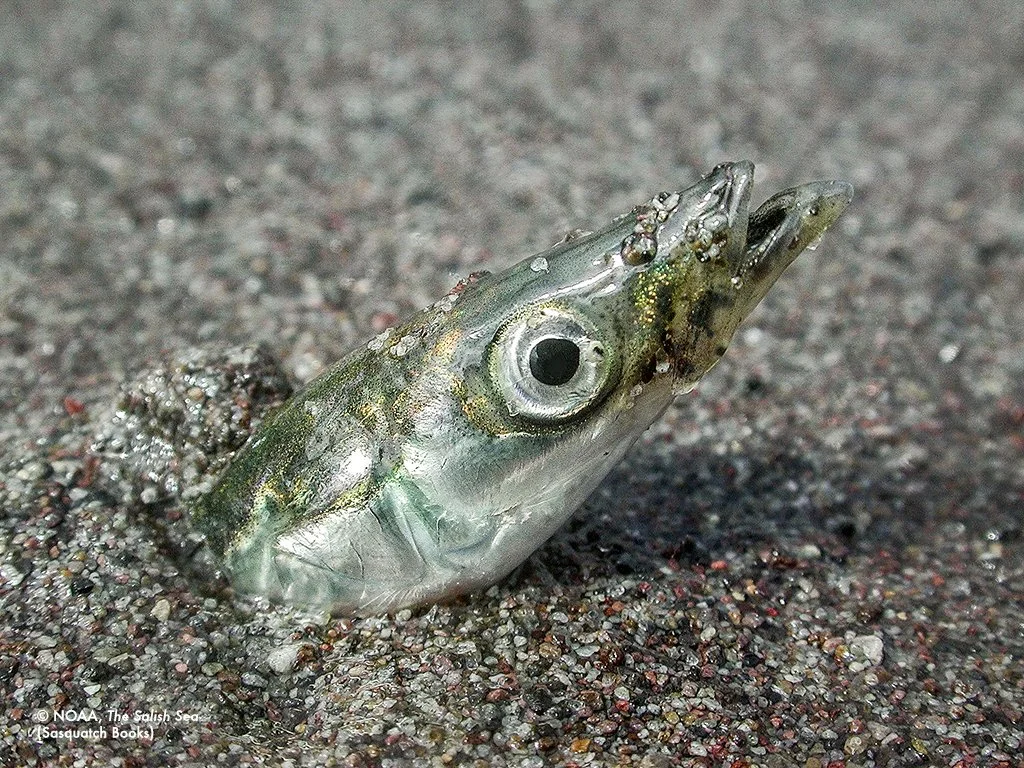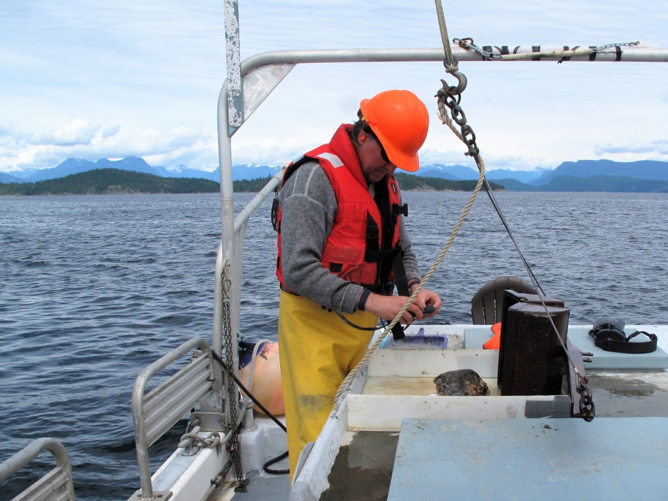“Well-aerated, well-sorted, medium-to coarse-grain...” might sound like a wine flavor profile, but it actually describes the type of sandy, sea floor habitat preferred by Pacific sand lance. Sand lance play a crucial role in the Salish Sea’s food web, providing nutrition for everything from seabirds to whales, salmon, and lingcod. It’s thought that one sand wave field in the San Juan Archipelago alone could be home to over 12 million sand lance, but we’re only beginning to learn about their habitat.
Where do Pacific sand lance live and why does it matter?
Sand lance are a small forage fish known for burrowing into the sand at the bottom of the sea. They’re largely out of human sight, but it would be a mistake to ignore them because they play a crucial role on the bottom of the food web that runs all the way to the top.
They’re an important food source for sea birds like the marbled murrelet and fish like Chinook salmon. If the Pacific sand lance population struggles, a negative ripple effect could be seen all the way up to southern resident killer whales, which eat Chinook salmon.
To date, our knowledge of Pacific sand lance habitat is basic at best, making it very hard to monitor and protect these important fish. That’s why Dr. Cliff Robinson of the Pacific Wildlife Foundation and Dr. Douglas Bertram of Environment & Climate Change Canada pitched a proposal to dig in (read the next few paragraphs and you’ll discover this is a pun!) and enhance the current GIS-based seafloor model that best describes sand lance habitat in the Salish Sea. Defining their habitat and monitoring their population can set the stage for future conservation efforts.
SeaDoc is funding their study, which went into full-swing in 2017. The team recently shared some cool photos from their fieldwork.
“Sand lance are important because they take plankton and convert it into fat,” said SeaDoc Society Science Director Dr. Joe Gaydos. “Tons of birds, fish and mammals eat them. If you can identify and protect the habitat they need, it benefits sand lance and all of the animals that eat them.”
Sand lance are unique in that they bury themselves in medium-coarse sand with low silt content when they’re not feeding in the water column. Robinson and Bertram’s goal is to refine their model to be able to identify and map this important habitat in the Salish Sea. To look for the presence or absence of buried sand lance in potential habitat, the team is taking boats out and using a claw-like grab sampler to pull up sediment or using underwater drop cameras to look for fish entering or emerging from the sand.
We’ll keep you updated as they continue their study.






